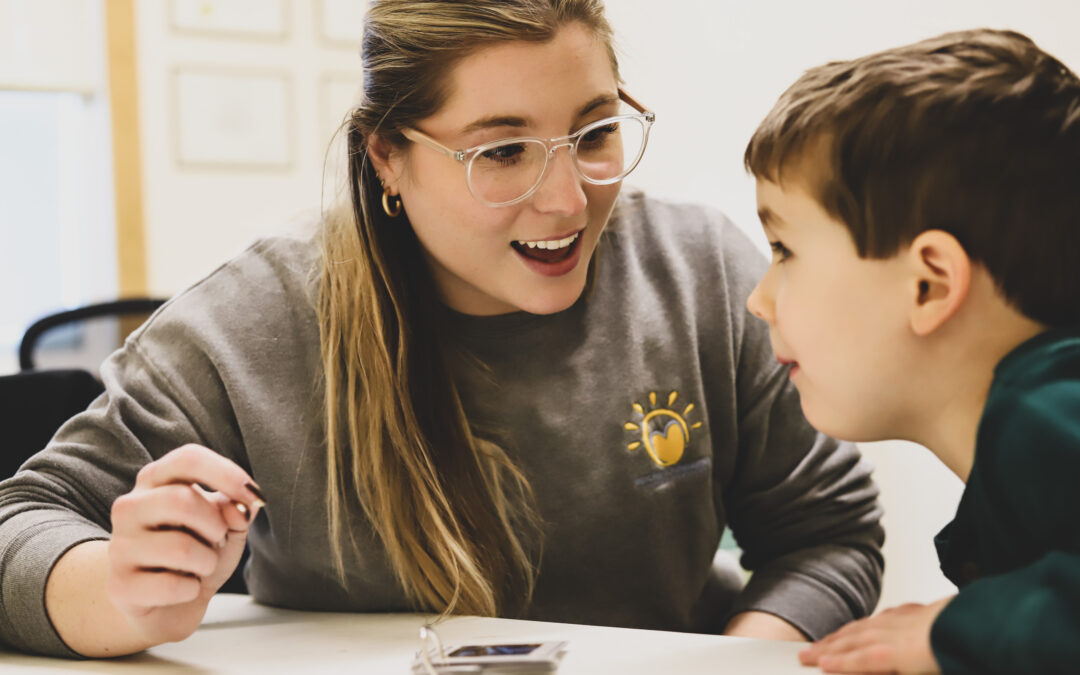MODEL AND SHARE:
- Your dog chews on your shoe; how do you respond? Take a deep breath, say “I am frustrated.” This shows that while it is ok to state your frustrations, you also can stay in control of your body.
- Do you ever ask your child “How was your day?” or “How was school?” and you get a one-word answer? Try this instead: describe the ups and downs of your own day first, to model what that conversation would look like; then you can prompt them with- “Tell me one good thing/bad thing that happened today.” That might spark a more productive conversation!
BE RESPONSIVE:
- Children are going to show their emotions. Be available to comfort if needed; respond to their frustrations with a sense of understanding. If your child is screaming and sad about not wanting to leave the park, be responsive by kneeling down to their level and say something like this: “I hear you-the park is so fun! You want to stay. We do have to leave now to go home and eat lunch. You are sad leaving, me too! But we can come back another day. It’s OK to be sad!” This will validate their feelings and let them know that you are listening and you are acknowledging the challenge.
- Positive emotions can have their own set of challenges- “I can see that you feel excited! Excited is when you are so happy you have a hard time controlling your body!” Parents can then model showing safe excitement by: Laughing, giving high fives, clapping and then explaining that sometimes our bodies are showing too much excitement and it’s not safe when we lose control! We still have to be safe when we feel excited, so let’s practice skipping to the park while holding hands instead of running away without a parent.
ASK:
- Your child might have a problem that they are having frustrations with; instead of them handing off the problem to the parent automatically to “fix” it-some questions should be asked first: “What is the problem?” Have the child explain what is going on. Ask: “How do YOU think we should fix it?” or “Has this happened before? How did we fix it before?” Asking the right questions can help them problem-solve in a more independent and empowered way.
- If this is a problem that the child is clearly not able to fix themselves- get them involved anyway- have them join in on the process so they can see how it was fixed, and ask them questions along the way: “What do you think mom should do next?” etc.
PLAY GAMES:
- “Controlled setting” refers to a familiar environment where your child feels comfortable and safe (home, grandma’s house, etc.) A setting where, if they lose a game and feel out of control, there will be limited social repercussions. The safe people present would then be able to process the negative feelings surrounding losing a game, then practice what to do. Prep your child prior to playing any game; remind them that the losing is possible, and role play what the child needs to do if they lose; such as: giving everyone a high five, saying “good game”; or “thank you for playing, do you want to play again?” The opposite result is just as important; what to say or do when your child wins: stress the importance of being a “good sport” in that the responses are the same; high five, say “good game”, “thank you playing”.
- Competitive games and cooperative games are great tools to mix up the outcomes of the games.
- Cooperative game examples:
- Balloon keep up (work together to not let the balloon hit the floor)
- Hidden pictures (work together to find all the hidden pictures)
- Stacking blocks-making a tower together
- “Feed the Woozle” board game
- Competitive board game examples:
- “Sorry”
- “Trouble”
- “Candy land”
- “Pop the Pig”
- Cooperative game examples:
ENCOURAGE:
- Encourage your child to say hello or introduce themselves to a new friend at the park
- Try a new sensory experience: petting an animal, playing in the dirt, exploring outdoors
- Challenge them to something hard: tying their own shoes, learning a new skill like making a snack for themselves
ENGAGE:
- If your child is watching a show or a movie-take an opportunity to pause the show and ask questions or comment about and/or discuss something exciting that just happened-ask them questions about what they thought about a certain exciting or sad scene.
- Screen games: with any kind of application- such as a coloring app: take turns “surprising” each other with your art, or if working on a puzzle app, work together, if a “racing” game; take turns to see who was faster; etc.
Author: Shannon Sitz, MS, CCC-SLP Beyond Boundaries Therapy Services

